Wheel Wreck: Intro | Cargo mound | Iron cylinder |Remains of the vessel | 3D site plan | Dive video
Engine cylinder fragments
A small group of six iron fragments have been noted some 11m to the north-west of the cargo mound. These fragments all appear to be the remains of a cast iron cylinder which has been broken into six major pieces and a greater number of smaller fragments. The seabed in this area is composed of large stone boulders, so locating all the smaller fragments was problematic. The area around these six fragments was searched and a further five fragments were identified and surveyed. This brings the total number of fragments located to eleven (C1 – C11).
A 3D model is available at the bottom of this page.

Plan of the cylinder in relation to the cargo mound
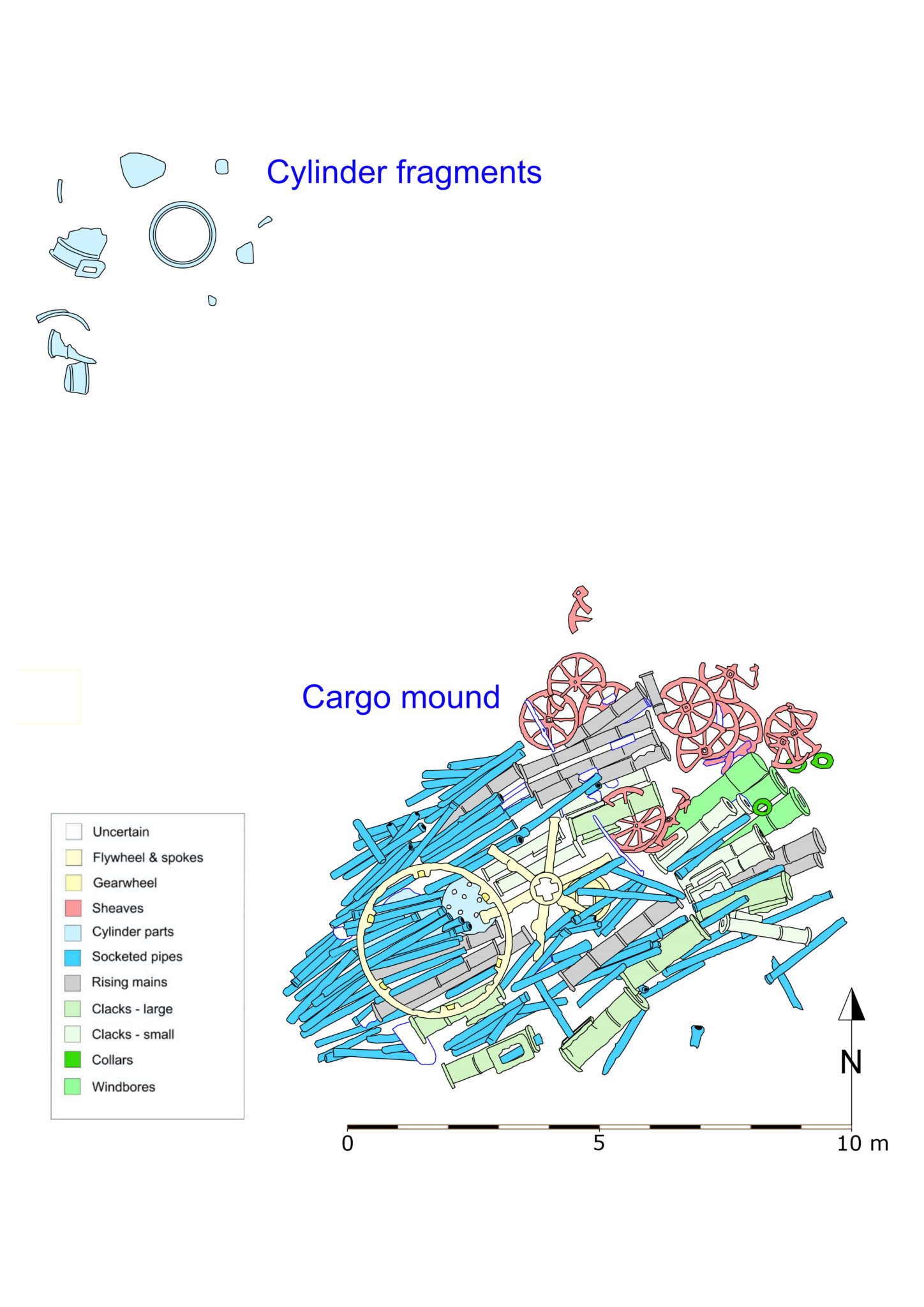
The cylinder has an internal diameter of 1.08m (42.5 inches), and external diameter of 1.16m – the flange with bolt holes has a maximum diameter of 1.32m. This is probably a steam engine cylinder – engine cylinders of this period are usually categorised by their internal diameter in inches. If this is a cylinder from a steam engine, it is probably not from a rotative engine as rotative engine cylinders of this period are usually of smaller diameter than this example. The most likely use for this engine is as a pumping engine for raising water in a mine, waterworks or in a canal system. One further possibility is that it was a ‘blowing engine’; these were used to blow air into a blast furnace. An example of such an engine is the 42 inch Grazebrook blowing engine. The Grazebrook engine survives at Dartmouth Circus in Birmingham and was built by M & W Grazebrook to a Watt design in 1817.
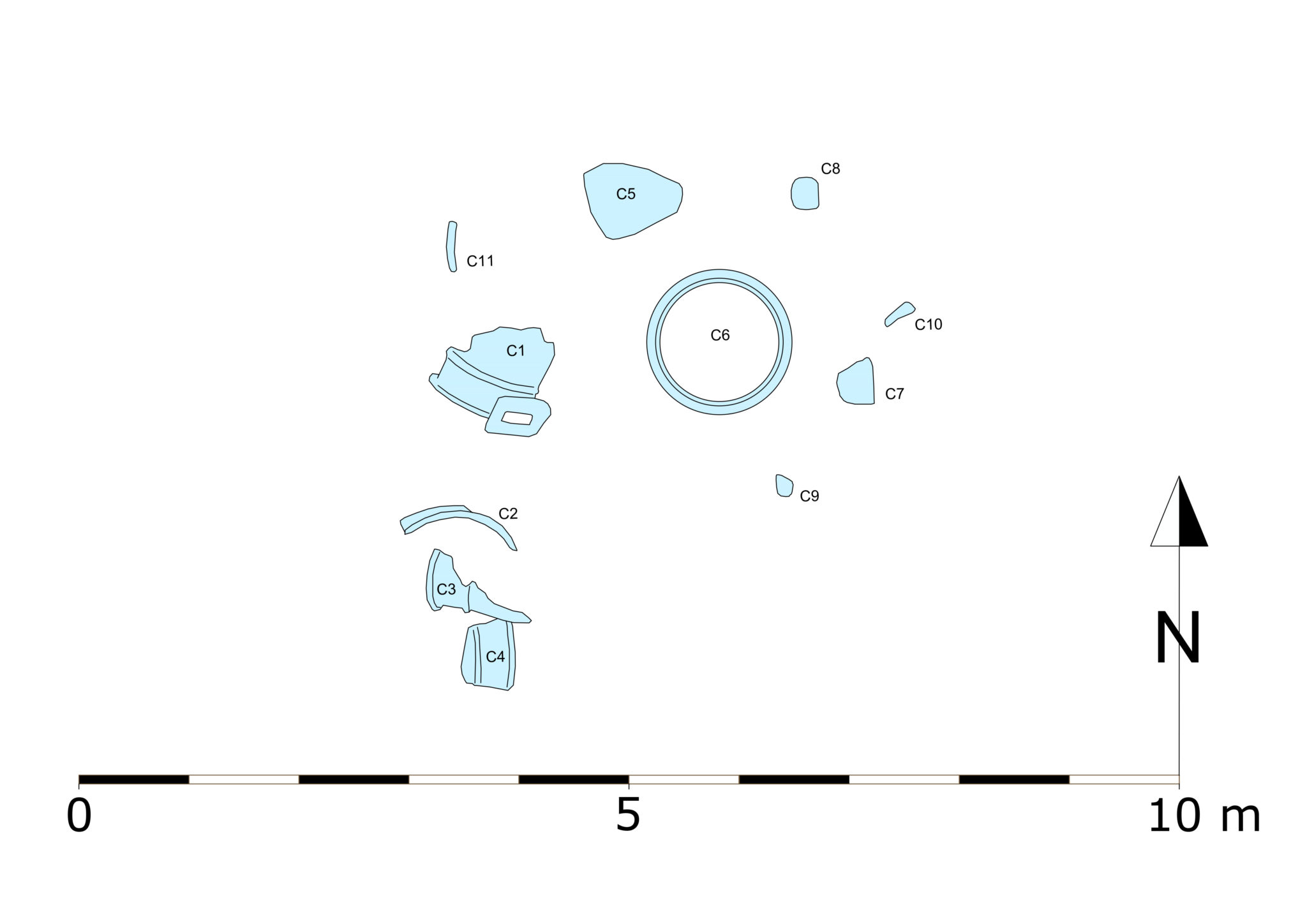
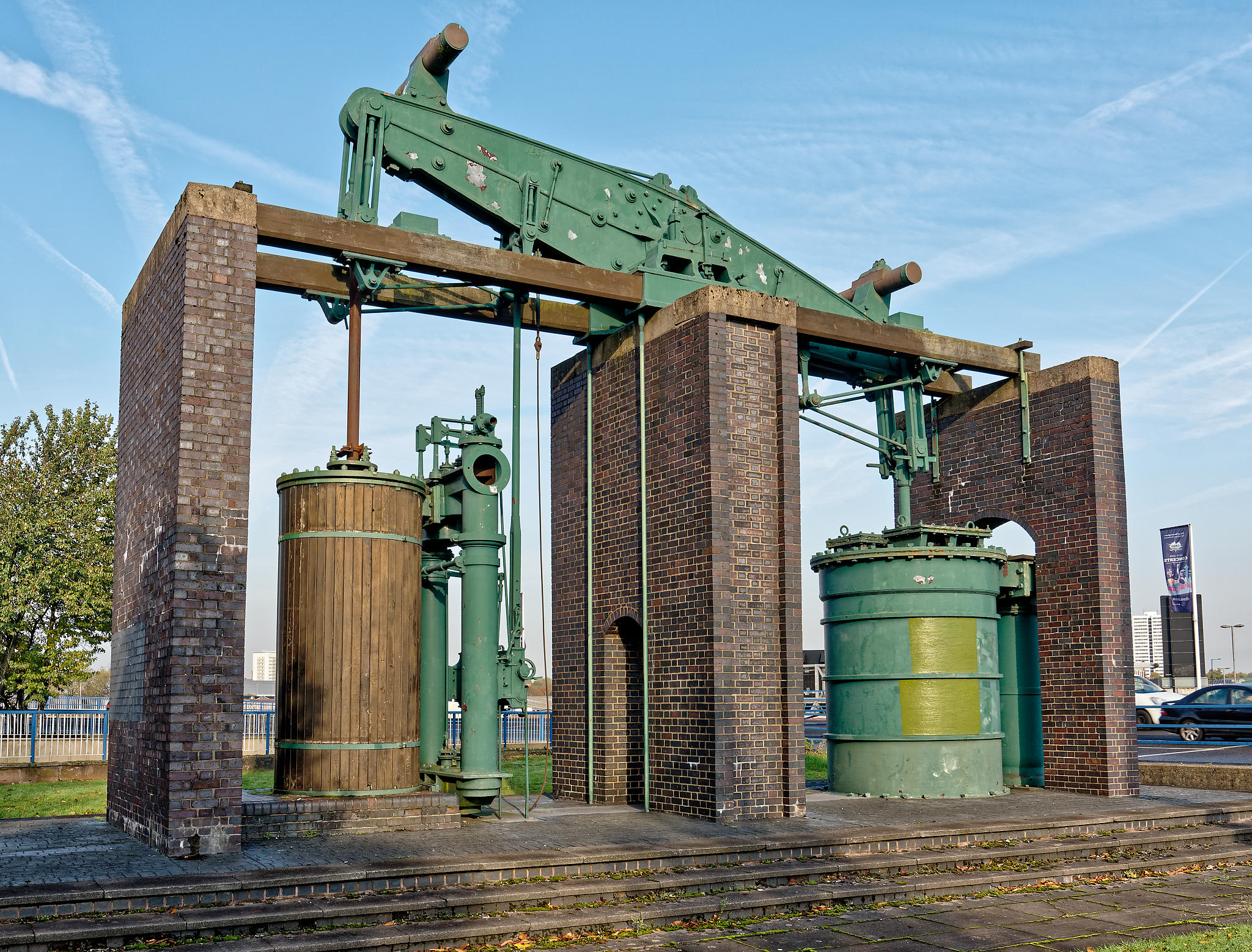
A small fragment of cast iron cylinder (F111) was recovered for further investigation. When the sample was mounted, sectioned and polished it was possible to establish the true thickness of the cylinder wall, measured at 21mm (7/8 of an inch) in the piece collected.
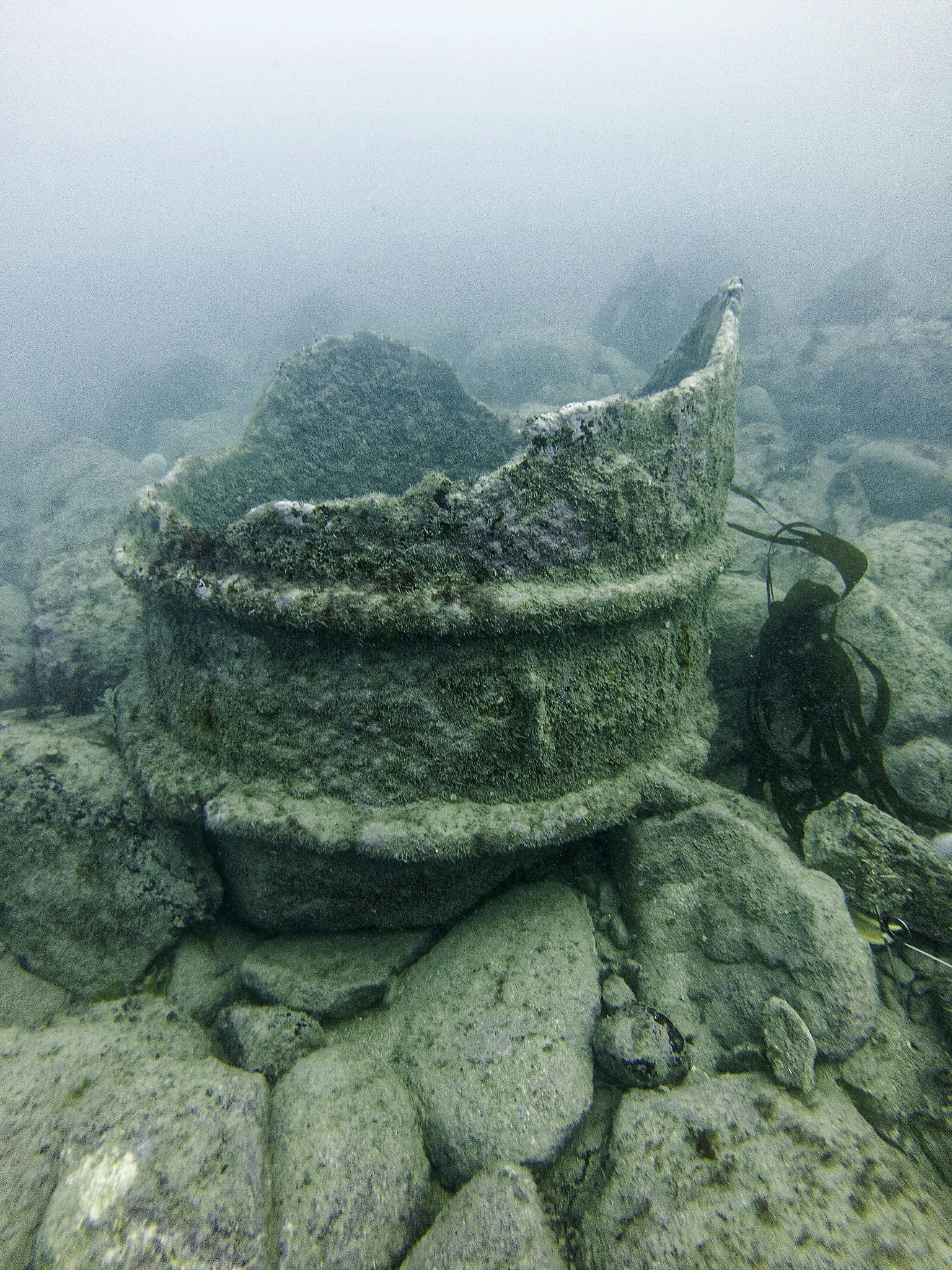
Reconstruction drawing
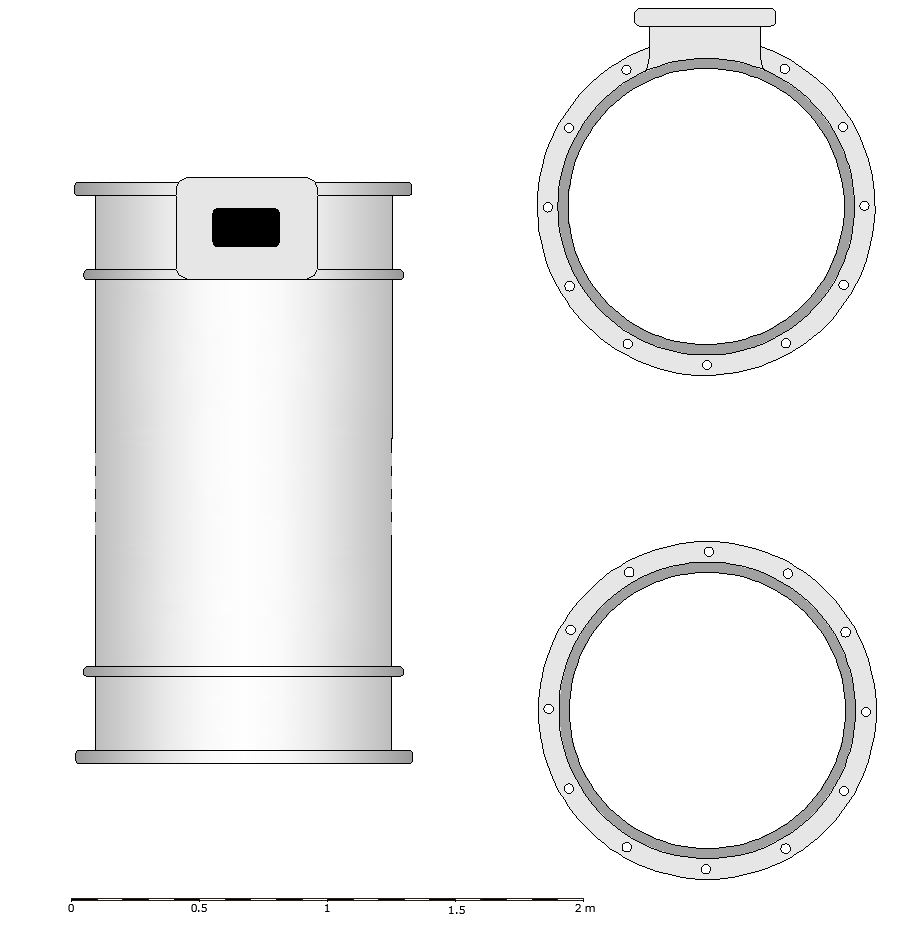
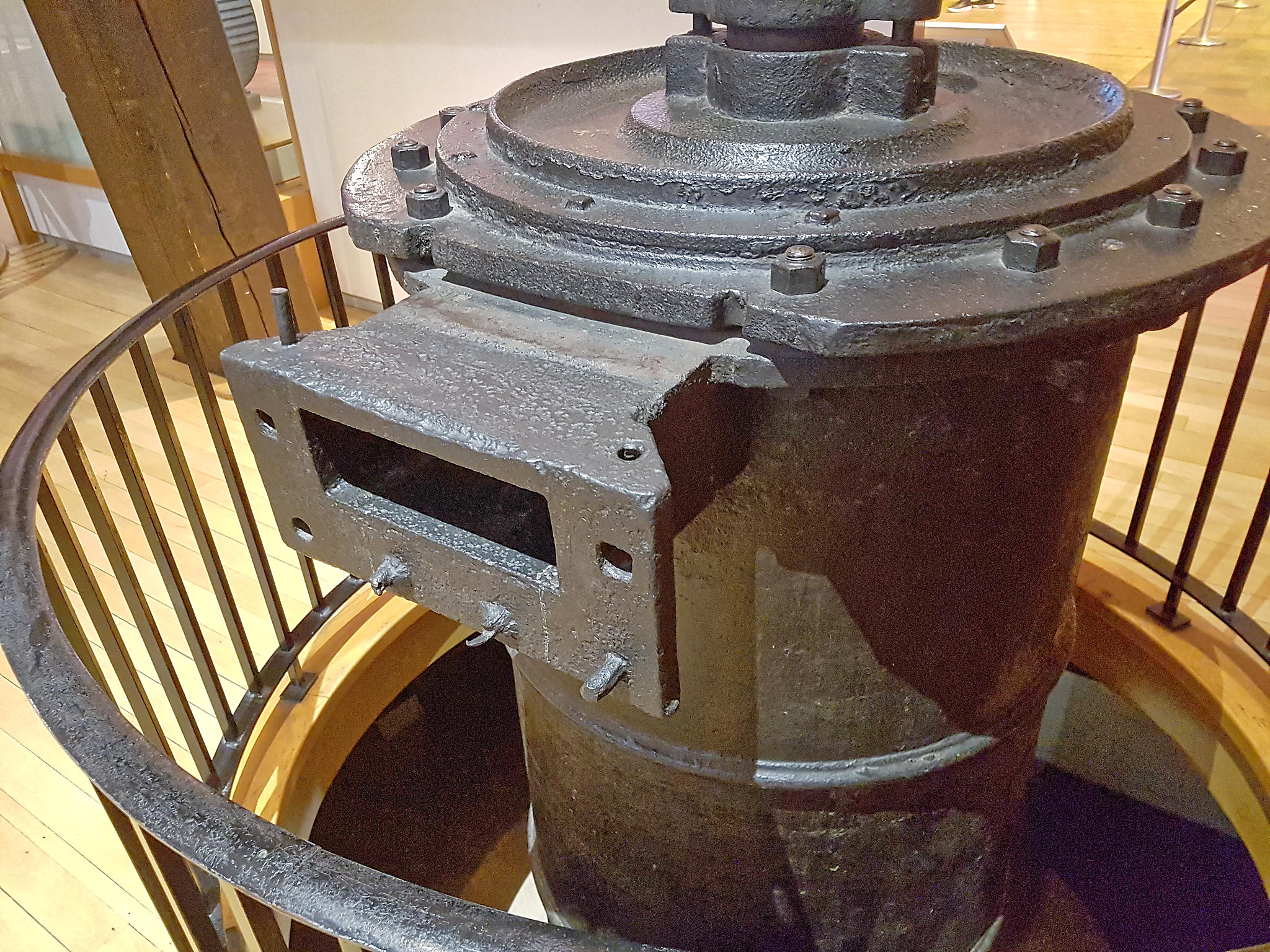
The early Bolton and Watt engine known as ‘Old Bess’ and preserved in the Science Museum London was built in Birmingham in 1777. The engine cylinder has a number of similarities with items discovered on the Wheel Wreck. The steam port appears to be very similar to that surviving in fragment C1 (see reconstruction drawing above). The circular object SW2 discovered in 2018 and tentatively identified as a cylinder cover/head bears an uncanny resemblance to that on ‘Old Bess’.
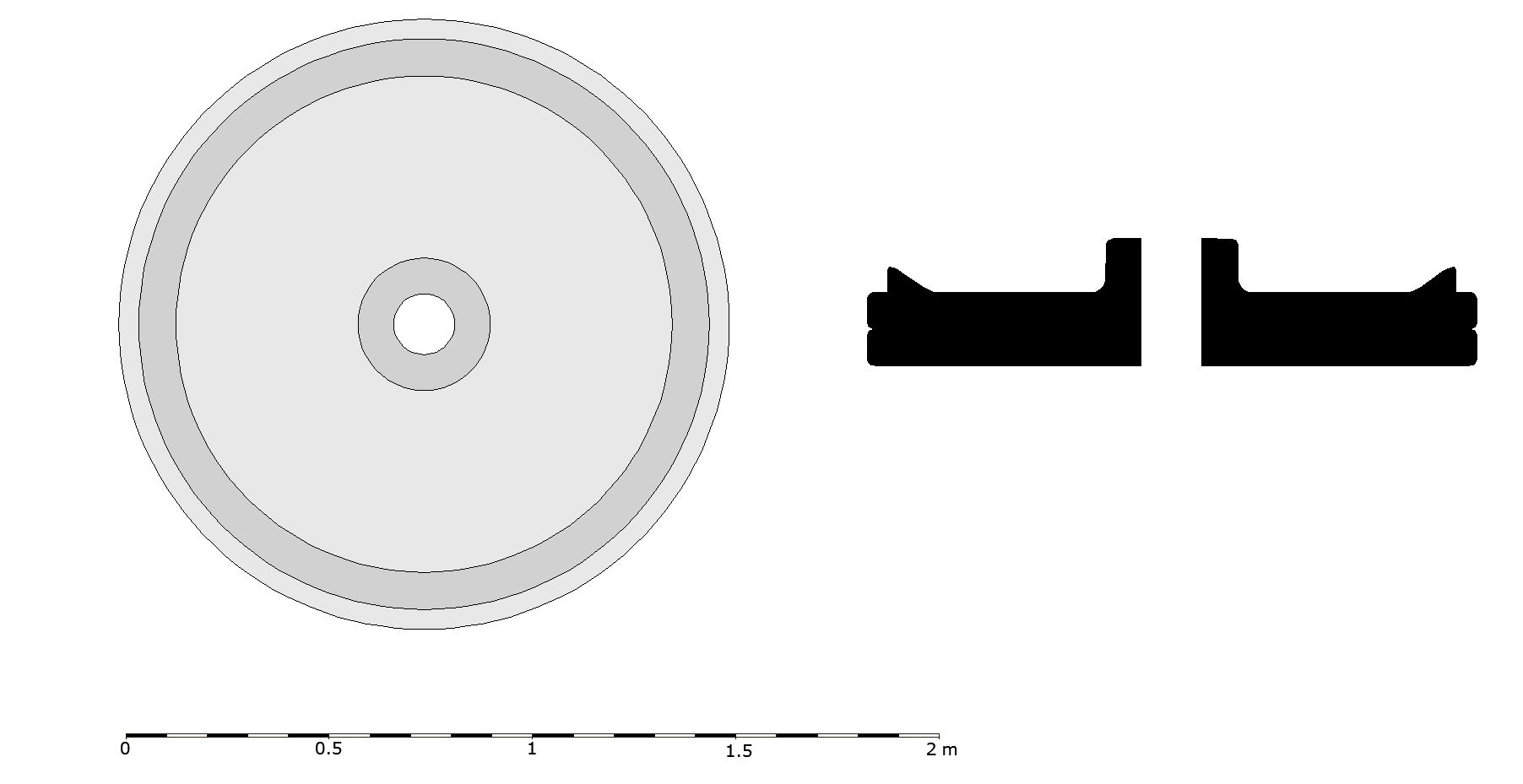
3D model
Click play to view the 3D model of the iron cylinder fragments. Explore it by using your left mouse button or finger to rotate the model, and your right mouse button or two fingers to pan around it.
Use the menu at the bottom of the 3D viewer to explore more advanced options.